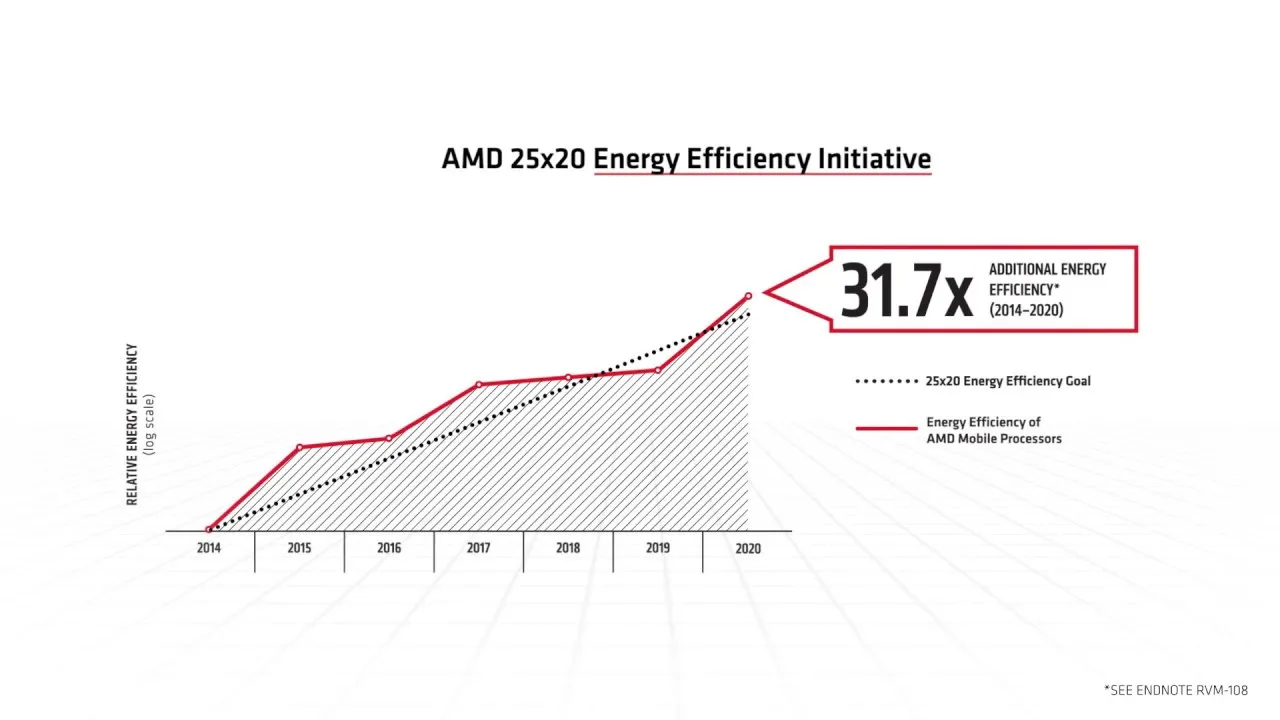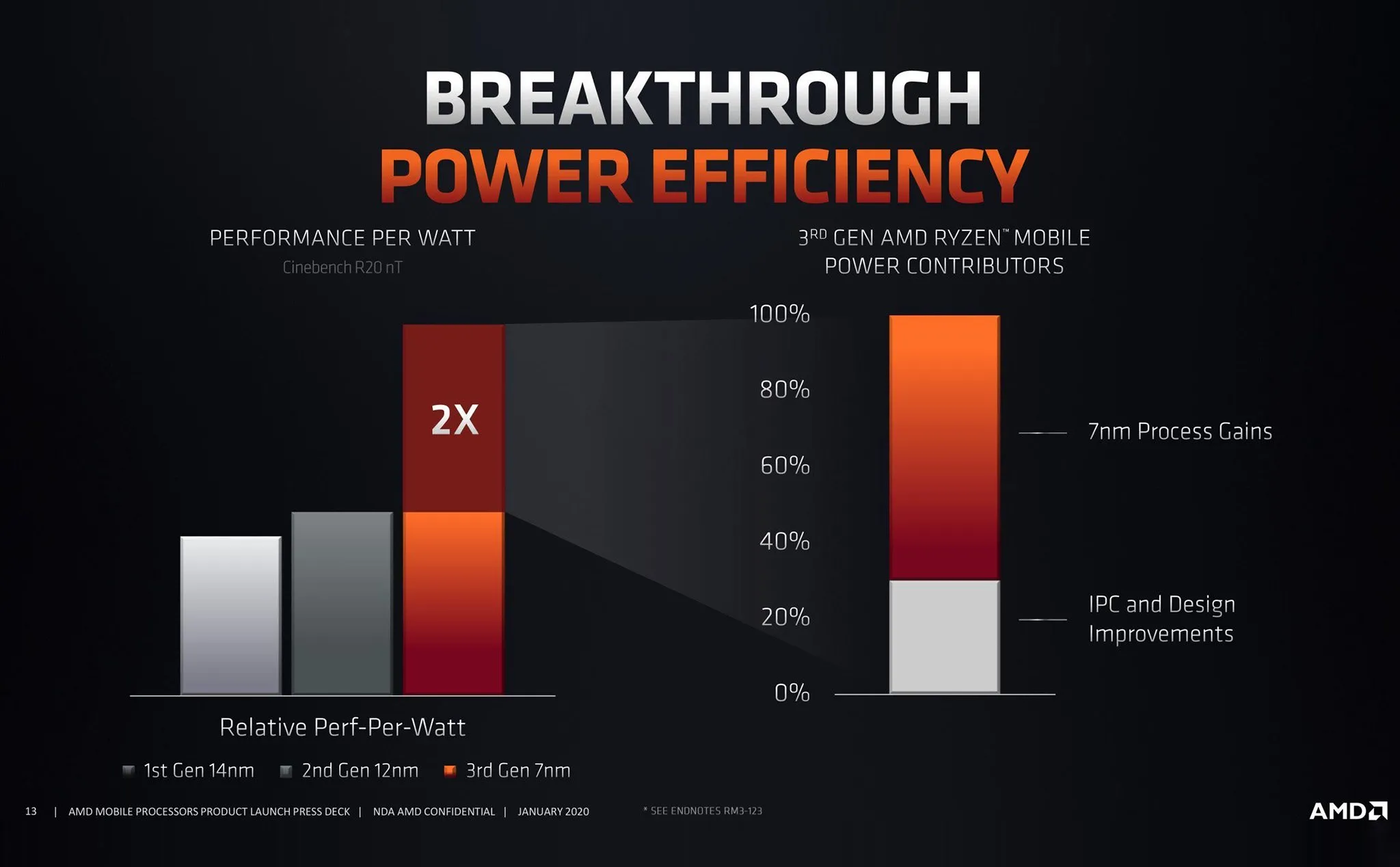
AMD Achieves 25×20 Energy Efficiency Goal with Ryzen 4000 Mobile CPUs
Contents
In 2014, with the launch of its Kaveri processors, AMD set an ambitious goal: to achieve a 25x improvement in energy efficiency by 2020, dubbed the “25×20” initiative. This meant delivering significantly more performance while consuming considerably less power. Recent data confirms AMD has not only met but exceeded this target. The AMD Ryzen 7 4800H, part of the newly released Ryzen Mobile 4000 Series, demonstrates a remarkable 31.7x performance-per-watt increase compared to the average 2014 CPU, based on 3DMark 11 scores.
 AMD 25×20 Energy Efficiency Achieved
AMD 25×20 Energy Efficiency Achieved
Exceeding Expectations with Ryzen 4000
This achievement translates to more powerful processors that consume less energy, leading to longer battery life in laptops and contributing to a smaller environmental footprint. The 25×20 goal was initially perceived as a challenging feat. Even AMD’s highly efficient Picasso processors, released in 2019, achieved only a 10x improvement over the 2014 Kaveri baseline.
The Path to 25×20: Architectural Advancements
 AMD Processor Architecture Improvements
AMD Processor Architecture Improvements
To achieve this significant leap, AMD focused on developing advanced System-on-a-Chip (SoC) architectures and enhancing Instructions Per Clock (IPC), effectively boosting energy efficiency by up to 84% compared to 2014 models. This focus on architectural efficiency played a crucial role in surpassing the 25×20 target.
AMD’s Resurgence in the Laptop Market
Reaching the 25×20 milestone underscores AMD’s strong comeback in the laptop market, positioning the company as a leading innovator in the industry. The Ryzen 4000 series represents a significant step forward in mobile computing, offering users a compelling combination of performance and power efficiency.
Conclusion: A New Era of Mobile Computing
AMD’s achievement of the 25×20 goal signifies a new era of mobile computing, with powerful laptops that offer extended battery life. The Ryzen 4000 series demonstrates AMD’s commitment to innovation and sets a high bar for future processor development. This increased efficiency benefits not only consumers but also contributes to a more sustainable future.





Comments (0)